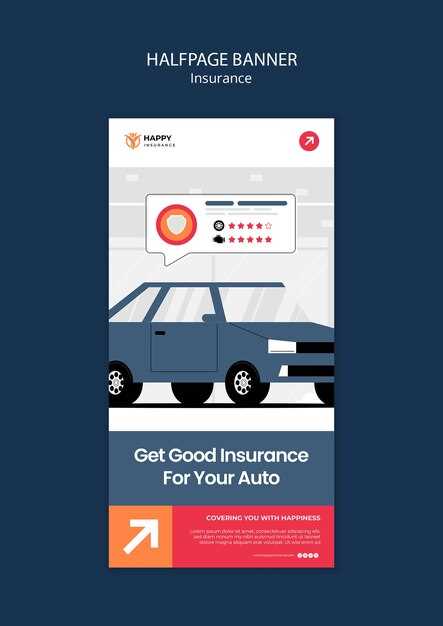Insurance options for car shipping

When it comes to transporting your vehicle across long distances, ensuring the right protection is crucial. Shipping a car is not just about choosing a reliable carrier; it also involves making informed decisions regarding insurance options that will safeguard your investment. Understanding the various types of coverage available can greatly reduce the risks associated with vehicle transportation.
Car shipping companies typically offer several insurance plans, ranging from basic coverage to comprehensive protection. Comprehensive plans often provide the most extensive level of security, covering damages that may occur during transport due to accidents, theft, or natural disasters. It is essential to review these options closely to determine the level of protection that aligns with your needs and budget.
Additionally, be aware that your personal auto insurance policy may also play a role in your vehicle’s transport. Some insurance providers extend coverage to vehicles while they are being shipped. Therefore, consulting with your insurer can help clarify what protections are already in place and what additional insurance options you might consider for a worry-free shipping experience.
Understanding Types of Coverage for Vehicle Transport

When transporting a vehicle, choosing the right insurance coverage is crucial for ensuring adequate protection throughout the shipping process. Different types of coverage options exist, each serving specific needs and risks associated with vehicle transport.
1. Liability Coverage: This basic coverage protects against damages or injuries caused to third parties during the transport. While it does not cover the vehicle itself, it is essential for legal compliance and can handle costs resulting from accidents involving the transport driver.
2. Cargo Insurance: This type provides coverage for the vehicle being transported. If the vehicle is damaged, destroyed, or lost during shipping, cargo insurance compensates the owner for the loss, ensuring financial protection for the vehicle at risk.
3. Comprehensive Coverage: Often included in cargo insurance, comprehensive coverage protects against a wide range of risks, including theft, vandalism, or natural disasters. This option is particularly valuable for high-value or classic cars, offering enhanced peace of mind.
4. Additional Protection Plans: Some transport companies offer additional plans that can include features like guaranteed pickup and delivery dates, or coverage for specific types of damages. Reviewing these options can provide tailored protection according to individual needs.
Understanding the different types of coverage options available for vehicle transport is essential for selecting the appropriate insurance plan. By assessing the risks involved and the value of the vehicle being shipped, owners can make informed decisions, ensuring comprehensive protection throughout the transport process.
Evaluating Insurance Options from Shipping Companies

When it comes to car shipping, ensuring your vehicle is adequately protected during transit is paramount. Shipping companies often offer various insurance options, and evaluating these can help safeguard your investment. The level of protection provided by these insurance policies can differ significantly, so it’s essential to understand what each option entails.
Firstly, examine the basic insurance coverage included in the shipping quote. Many companies provide a minimum level of insurance, which may not fully cover the potential value of your vehicle. Assess the limitations of this basic insurance, including deductible amounts and the specific circumstances under which damage claims can be filed.
Next, consider purchasing additional coverage. Many shipping companies offer optional plans designed to enhance protection. This type of insurance often provides broader coverage, including accidents, theft, and severe weather events. It’s crucial to explore these additional options to ensure your vehicle is fully protected during transport.
Another vital aspect to evaluate is the reputation of the shipping company’s insurance provider. Research the insurer’s claims process and customer service record. A reliable insurance partner should handle claims efficiently and fairly, giving you peace of mind that your vehicle will be well taken care of.
Finally, review the policy’s terms and conditions carefully. Look for any exclusions or hidden fees that could impact your coverage. Understanding the fine print of the insurance options available to you is essential to make an informed decision, ensuring your vehicle remains protected throughout the shipping process.
Claim Process: What to Do in Case of Damage or Loss
In the unfortunate event that your vehicle sustains damage or is lost during transport, it’s crucial to understand the claim process to ensure proper protection and compensation. Follow these steps to navigate the claims efficiently.
First, inspect your vehicle immediately upon delivery. Document any visible damage with clear photographs from multiple angles. If the vehicle is missing, record all relevant information about the shipping process, including the transport company’s details and tracking information.
Next, notify the transport company as soon as possible. Most companies have a specific time frame within which claims must be reported. Provide them with all documented evidence, including photos and your original shipping contract. This ensures that your claim is processed promptly.
After informing the transport provider, check your insurance policy. Understand the coverage you have for vehicle transport and the specific procedures for filing a claim. Some policies may require you to complete additional forms or provide further documentation.
Once you have gathered all necessary materials, submit your claim to the insurance provider. Ensure you keep copies of all correspondence and documentation. This can be critical for follow-up inquiries or potential disputes.
Finally, follow up with both the transport company and your insurance provider. Claims can take time to process, but staying persistent will help expedite the resolution. Remember to keep records of all communications, including dates, names of representatives, and the content of discussions.
By following these steps, you can effectively manage the claim process and seek the protection you deserve in case of damage or loss during vehicle transport.

